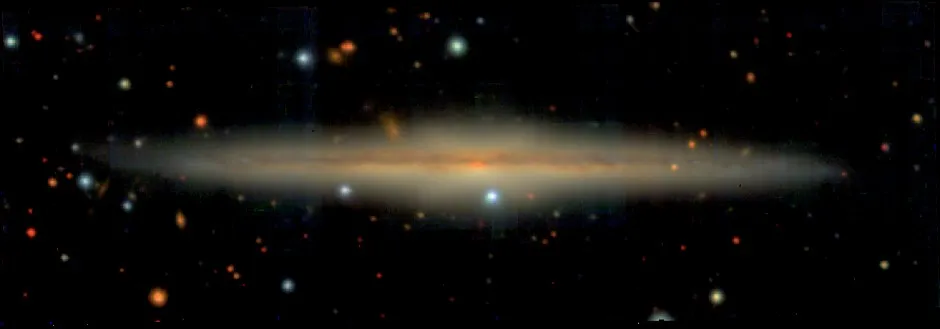Bad news for anyone who thought our galaxy was one of the cool, different neighbourhoods of the Universe: new research suggests the Milky Way is far more normal than astronomers had previously thought.
Researchers have, for the first time, studied a detailed cross-section of a galaxy similar to our own. Its structure, say a team at the University of Sydney, is a lot like Milky Way, which forces us to reconsider what we know about our own cosmic back yard.
The spiral structure of our home galaxy consists of two layers of stars, one thick and one thin. The thick layer features mainly ancient stars with a lower ratio of iron to hydrogen and helium. The thin layer, which includes the Sun, is home to younger stars that are more metallic. Until now, researchers had assumed these layers were the result of a freak and violent accident millions of years ago: a collision between two very different galaxies.
However, the newly studied galaxy – dubbed UGC 10738 – reveals that it too has a similar structure.

"Our observations indicate that the Milky Way's thin and thick discs didn't come about because of a gigantic mash-up, but a sort-of 'default' path of galaxy formation and evolution," said Dr Nicholas Scott, one of the lead scientists of the study. "From these results we think galaxies with the Milky Way's particular structures and properties could be described as the 'normal' ones."
Far from being galactic hipsters with mysterious backstories, Milky Way-style galaxies are probably very common. But if that sounds like an anti-climax, think again: it's a potential leap-forward in astronomy.
"It means we can use existing, very detailed observations of the Milky Way as tools to better analyse much more distant galaxies which, for obvious reasons, we can't see as well," said Scott.
Although astronomers have viewed similar discs in other galaxies, they have never been able to analyse the type of stars that exist within them.
Scott and his colleagues solved this issue by pointing the European Southern Observatory's Very Large Telescope in Chile at UGC 10738, 320 million lightyears away. Relative to Earth, the galaxy is viewed 'edge on', revealing a cross-section of its structure.
Read more about galaxies:
- The hunt for the oldest galaxies in the Universe
- How far would we have to travel to leave our galaxy?
- Why do the centres of galaxies contain black holes?
"Using an instrument called the multi-unit spectroscopic explorer, or MUSE, we were able to assess the metal ratios of the stars in its thick and thin discs," said study co-lead Dr Jesse van de Sande.
"They were pretty much the same as those in the Milky Way – ancient stars in the thick disc, younger stars in the thin one. We're looking at some other galaxies to make sure, but that's pretty strong evidence that the two galaxies evolved in the same way."
It's an important step forward in our understanding of how galaxies evolved, said co-author Prof Ken Freeman from the Australian National University. "We know a lot about how the Milky Way formed, but there was always the worry that the Milky Way is not a typical spiral galaxy. Now we can see that the Milky Way's formation is fairly typical of how other disk galaxies were assembled."
